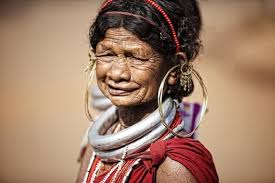What is a tribe ? Describe the features of Tribe of India.

Definitions of tribe
Based on geographical surroundings and socio-cultural characteristics, Indian society is divided into tribal, rural, and urban cultures. Tribal communities are an integral segment of Indian society. Almost all parts of the world have a tribal population.
India has the second largest tribal population in the world, the first being Africa. The term “tribe” originated around the time of the Greek city-states and the early formation of the Roman Empire. The “Dictionary of Anthropology” reveals the orthodox definition of tribes, which was derived from the Latin term “Tribus” as “tribes.”: A social group, usually with a definite area, dialect, cultural homogeneity, and unifying social organization, is what constitutes a tribe.
-
D.N Majumdar defines a tribe as a social group with territorial affiliation, endogamous with no specialization of functions ruled by tribal officers hereditary.
-
Lewis H. Morgan in his book “Ancient Society” (1877) defines a tribe as a completely organized a society where all forms of social relation are dominated by kinship.
-
Unspecialized multi-family groups, clans, or bands compose a segmental organization like a tribe, according to Marshall Sahlin’s.
-
According to Lucy Mair, “A tribe is an independent political division of a population with a common culture”
Features of tribes
The Four features of tribes are as follows:
-
Social Organization: Tribes often feature a kinship-based social structure, with members divided into extended families clans, or lineages. Kinship ties are fundamental to the tribe’s social cohesiveness and solidarity. Leadership responsibilities might be based on ancestry, age, or status, and decisions and frequently made by consensus among elders or powerful individuals.
-
Cultural Identity: Tribes have unique cultural identities, including shared practices, traditions, language, and belief systems. Cultural features can set tribes apart and foster a sense of belonging and cohesion among members. Rituals, rites, and art forms are important cultural traditions that assist tribal communities in maintaining their identity over time.
-
Subsistence Economy: Tribes have traditionally relied on subsistence economics, including hunting, gathering, fishing, herding, and small-scale agriculture, to support their basic requirements. Economic activities are often communal or cooperative, with resources shared among tribal members through reciprocity and mutual support. Traditional ecological knowledge is vital for resource management and maintaining tribal livelihoods in their natural habitats.
-
Territoriality and Mobility: Tribes usually live in areas with historical and cultural significance. Geographic characteristics, such as rivers, mountains, or woods, can define a tribe’s territory and hold spiritual or symbolic importance. Tribes may have territorial boundaries, although their mobility patterns vary. Some live nomadic or semi-nomadic lifestyles, following seasonal resources or grazing areas, while others have more established patterns of residency.

